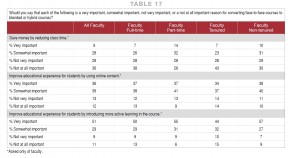Dear Commons Community,
The New York Times has a featured article today focusing on Santiago Taveras, the principal of Dewitt Clinton High School in the Bronx. The article reviews Mr. Taveras’ previous position in the NYC Department of Education under Mayor Michael Bloomberg, where he was responsible for phasing out struggling schools and replacing them with new schools. These days and under the leadership of Mayor Bill de Blasio and Schools Chancellor, Carmen Farina, Mr. Taveras is doing what he can to save Dewitt Clinton High School from being closed and reopened in a new configuration of small and/or charter schools. The article comments:
“In recent years, Dewitt Clinton has battled low graduation rates, plummeting enrollment and a climate that made many students feel unsafe. During the tenure of Mayor Michael R. Bloomberg, large, struggling schools like this one were regularly closed and broken up into new, smaller institutions, which the administration favored as a way to shake up the staff and give students more individual attention.
One hundred fifty-seven schools, many of them large, comprehensive high schools like Clinton, were shuttered or scheduled for closing during the Bloomberg years. The public face for many of those closures was Santiago Taveras, who was a deputy chancellor.
“I spent time phasing out schools at the D.O.E., which is fine; I don’t regret any of that,” Mr. Taveras said of his time at the central office of the Education Department. “When I heard de Blasio say he wasn’t going to close schools, I thought, That’s interesting. What are we going to do instead? I want to be a part of that.”
This month, Mayor Bill de Blasio, who previously opposed closing schools except as a last resort, announced his plan for fixing 94 of the city’s most troubled schools by elongating the school day, giving teachers added training and providing extra support for students and their families. Clinton is one of the 94.
DeWitt Clinton turned 117 this year, and its physical presence attests to better times. It is an elegant behemoth of cream-color brick, with a dignified row of oak trees lining its front. The ceilings of some classrooms are more than 12 feet high. It once enrolled close to 5,000 students. And its long, impressive list of alumni includes the author James Baldwin, the Hall of Fame basketball player Nate Archibald, and Ralph Lifshitz. In the 1957 yearbook, one of dozens in Mr. Taveras’s wood-paneled office, Mr. Lifshitz — who became the clothier Ralph Lauren — listed his professional aspiration simply, as “millionaire.” Today, at the school’s elegant front entrance, there is a drab, gray metal detector.
While the school’s struggles have indeed been severe, they have not been going on for very long. Teachers and former Education Department officials said the school and its students did well in the 1990s after a turnaround orchestrated by Principal Norman Wechsler… But dramatic changes in the terrain of the school system over the last dozen years have posed steep challenges for Clinton.
Mr. Bloomberg opened 656 schools, including charter schools, and many education experts deem his aggressive push for small schools a great success. A multiyear study by MDRC, a nonprofit research organization, has found an array of benefits to the approach in New York City, including higher graduation rates, a greater likelihood that students will graduate in four years and go right to college, and increased college enrollment rates.
But as hundreds of small schools opened, principals and teachers at the remaining large schools like Clinton often complained — and statistics often corroborated — that they were getting disproportionately high numbers of the most challenging students.
“It was like a light switch going off — like, oh, my gosh, where did these kids come from?” said Ann Neary, an Advanced Placement literature teacher who has been at Clinton for 10 years. “We have some fabulous students, and that’s why I teach here every day, but we got a lot of kids who couldn’t possibly have graduated in four years, and we were totally happy to teach them and to help them. But then we got slapped on the wrist for students not graduating on time.”
The last two paragraphs accurately depict one of the critical issues of closing schools and reopening smaller and/or charter schools. Students who are not doing well are basically herded into the remaining or other schools because they were not accepted in the new small and/or charter schools thereby creating a cycle of closing schools, creating small schools, herding a disproportionate number of struggling students, and then closing schools. In the final analysis, while some schools do better, the overall system has not done much better.
I am not against small schools but they should not be set up as bastions of selected student populations. Mayor de Blasio and Chancellor Farina are approaching the issue in a way that is equitable for the entire student population not just those who are selected for certain schools whether they be under the aegis of the NYC Department of Education or a charter school organization.
Tony








